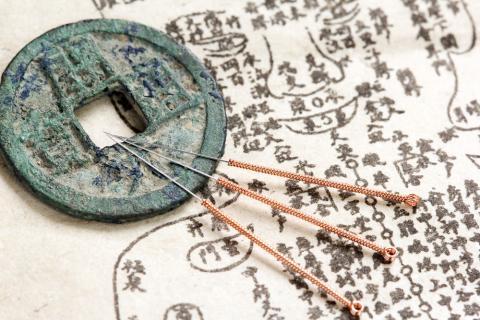
Ticks might seem like fairly innocuous, if annoying, insects, but these arachnids often carry dangerous diseases that can lead to chronic illness. One of the most widespread of these diseases is Lyme. Lyme disease is found throughout most of the United States, though a 2015 study linked 95% of all cases to 14 states, including Delaware, Connecticut, Maine, Maryland, Massachusetts, Minnesota, New Hampshire, New Jersey, Pennsylvania, Rhode Island, Vermont, Virginia, and Wisconsin. However, a small percentage of cases were found in areas of California, Oregon, and Washington.
Symptoms of Lyme Disease
To contract Lyme, you must be bitten by a tick carrying the bacterium Borrelia burgdorferi. Symptoms typically include a fever, headache, fatigue, and a skin rash. Most commonly, a circular, bulls-eye rash will develop around the bitten area. Also look for:
- Stiff, swollen joints
- Dizziness
- Night sweats
- Fuzzy-feeling or impaired thinking
- Light sensitivity
- Neurological issues, including loss of balance and facial paralysis
- Irritability
- Hearing loss, jaw pain, or tinnitus
Treatment of Lyme Disease
The first step to treatment is diagnosis; the first step to diagnosis is connecting the dots. Are you experiencing any symptoms? Do you notice a bulls-eye rash? Have you been in an area affected by Lyme and were you out hiking or cleaning up brush? If the answer is yes, finding a doctor immediately is a necessary first step. Many people find success with antibiotic treatments, but this typically works for early stage Lyme, usually within the first 3 weeks of contraction.
Post-treatment Lyme disease, or chronic Lyme disease, is different. Few health centers address people with ticks, and few people are aware of having Lyme in the first place. Long-term symptoms appear similar to fibromyalgia, and can be devastating, though not life-threatening. Consulting with a doctor or naturopath with experience in Lyme disease is often necessary, as both conventional and alternative protocols can be complex, expensive, and time-sensitive.
Finding a Practitioner to Treat Lyme Disease
Finding a practitioner who has experience with Lyme disease can be harder than it seems. Alternative therapies can be conflicting, and in some cases can do more harm than good, especially if at the risk of necessary antibiotics. For these reasons, working with a licensed health provider can help; lymedisease.org has a Lyme Disease Physician Referral website for those who don’t know where to start.
Alternative Therapies for Lyme Disease
First, it’s important to state that I am not a medical doctor or a health practitioner; before you begin any treatment, you should consult with a licensed professional.
The following is a list of therapies and pain relievers that are often sought out as alternative treatments for those with post-Lyme or Lyme disease:
Chinese Medicine
Eastern Medicine typically comes from the perspective of healing the whole body, rather than simply treating the symptoms. This book, recommended by Dr. Andrew Weil, uses Chinese medicine to help restore health with a healthy list of herbal remedies.
Infrared Sauna
Saunas can be a fantastic way to detox your body, relax your muscles, and even train for high altitude and an increased VO2 Max; infrared saunas are even better, using light to create heat. Using an infrared sauna can be helpful for those suffering from Lyme, as an aid in the detoxification process.
Bentonite Clay
Bentonite is a detoxifier; some patients use it like a clay mask, making a paste from clay and apple cider vinegar and applying it to the body. Some health practitioners recommend applying it to the spine, where Lyme disease pathogens can gather, as this article explains.
Garlic and Oregano
Both garlic and oregano are powerful antimicrobials, but healing Lyme disease with these two supplements can be difficult. Most recommendations suggest using extremely large amounts, meaning that the effectiveness often comes down to the patient’s willingness to down garlic and oregano capsules several times throughout the day.
Acupuncture
Acupuncture can be a helpful way to reduce pain to those who especially feel stiff, swollen joints and sore muscles as a result of Lyme.
Probiotics
For those on antibiotic protocols, ingesting beneficial bacteria is critical. Probiotic supplements can be found in the refrigerated sections of most health food stores, but eating sauerkraut and pickled vegetables, or drinking kefir and kombucha, are fantastic ways of boosting your probiotic intake without much thought. Be sure to take your prebiotics, too.
Healing Centers
Not everyone is lucky enough to live near a knowledgeable Lyme disease expert. In these cases, visiting a healing center can be critical in addressing your whole body during several days, or even a week-long or month-long stay.
Community
Lyme disease can be an isolating experience, but staying in touch with a community can be a reminder that you’re not alone. Groups like More Than Lyme offer support, and more importantly an understanding of what it’s like to live with Lyme.
Being Your Own Health Advocate
For many, the most frustrating part of Lyme disease is having to prove that the feelings being felt aren’t imaginary—and on top of that, they’re debilitatingly painful. Being your own health advocate is unfortunate, but often necessary, and a large part of doing so is gaining knowledge. Books like Healing Lyme by Stephen Buhner offer therapeutic herbal protocols for healing the body, in addition to explaining exactly what’s happening internally due to Lyme.








